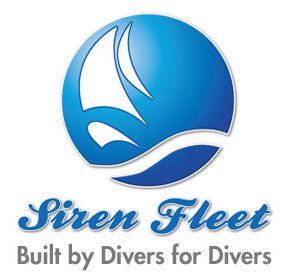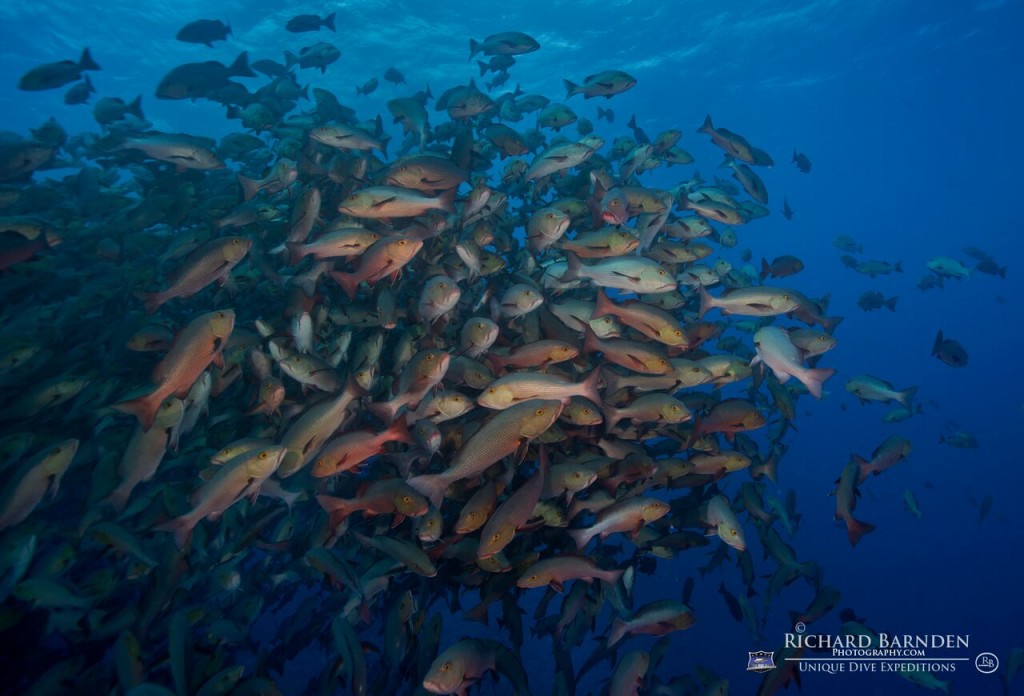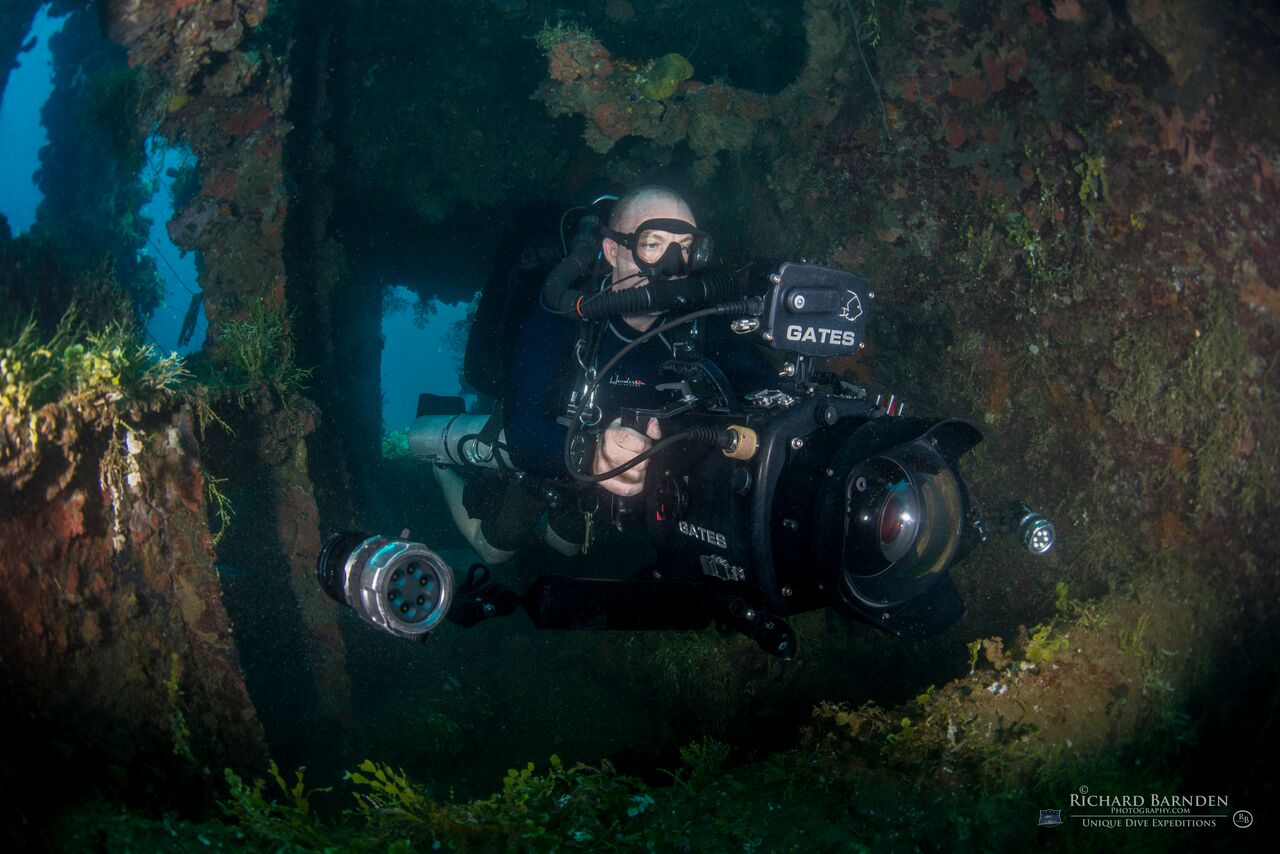News
Get ready for some very special trips for 2016 and beyond with Palau Siren

 After a full 4 month refit in Cebu, under the watchful eye of the Worldwide Dive and Sail team, the Palau Siren will be back in action in February 2016.
After a full 4 month refit in Cebu, under the watchful eye of the Worldwide Dive and Sail team, the Palau Siren will be back in action in February 2016.
If you would like to be hooked in at Blue Corner, drifting in Ulong Channel or experiencing some mantastic dives in German Channel, contact the Siren Fleet reservations team (availability starts from June 2016).
Worldwide Dive and Sail have been working on some very special trips for Palau Siren, with Paul Collins and Richard Barnden of Sam’s Tours Unique Expeditions, to offer some very exciting and exceptional trips in 2016 and 2017.
Palau Spawning trips
Palau has the perfect underwater conditions for the propagation of underwater species, with lakes and lagoons that provide places for juveniles to safely mature far away from the bigger predators. This is why many species come in large numbers to Palau to breed and spawn. Imagine yourself in the middle of a reef surrounded by thousands of fish displaying just in front of you in an overwhelming coordinated spawning ceremony. Something truly marvelous, extraordinary and unique to witness.
Depending on the moon phase, several species of fish aggregate and spawn while others don’t. This is likely to leave enough space for all and to not mix with each other.
Thus, during the Palau Siren Full Moon trips, you will experience tens of thousands of Red Snappers rising up from the deep to start their mating manoeuvres while changing their colors from red to white. Whilst during the new moons trips you will witness hundreds of Bumphead Parrotfish, aggregating to start their noisy climatic mating dance.
Which one is more incredible to witness? This is for you to compare but for sure, both underwater behaviors bring you a high level of adrenalin and a totally unforgettable experience. Not only because of the huge aggregations themselves, but also because of what they also attract; bull sharks and oceanic blacktip sharks ready to hunt in the large school of fish.
During both trips, night dive lovers will also have some memories to take home. Blackwater night dives, miles away from the shallow water of the reefs are where divers can watch one of the largest migrations on earth, as all manner of weird and wonderful creatures from the depths head closer to the surface to feed. From post larval fish to Cephalopods, many smaller than your finger nail, these amazing dives present some of weirdest creatures you are ever likely to see without a submarine.
To help you to understand what you will witness during the dives, Paul and Richard will also deliver a number of presentations aboard the Palau Siren about these unique dives. These talks will cover the ecology of these events and how to photograph them.
“I would like to give a big thank you to Richard and Paul for their fascinating talks and the red snapper spawning dives which were marvelous!” Stephen John Barlow, Palau April 2015
For the chance to enjoy a once in a lifetime experience, contact the reservations team for further details and ask about the following dates:
2016
Full Moon Expeditions:
- 11th – 18th November 2016 (good for plenty of Mantas too)
- 10th – 17th December 2016
New Moon Expeditions:
- 4th – 11th March 2016 (good for Seabream Sailfin Snappers too)
- 31st March – 7th April 2016 (good for Seabream Sailfin Snappers too)
- 25th June – 5th July 2016 (good for Groupers too)
2017
Full Moon Expeditions:
- 5 – 15 February 2017
- 7 – 17 May 2017 ( good for plenty of Mantas too!)
- 12 – 22 November 2017
New Moon Expedition:
- 15 – 25 July 2017
Palau Wreck Trips
If what increases your adrenaline is to explore WWII wrecks in the deep then you are going to love what Worldwide Dive and Sail has prepared for you this upcoming season in Palau.
Known for its manta rays, grey reef sharks, big schools of fish and its Jellyfish Lake, Palau hides under its pristine waters, some of the most incredible, and almost unknown, WWII Japanese wrecks. Only six weeks after the more famous attack on Truk Lagoon, the American Navy launched ‘Operation Desecrate One’ on Palau. The aim was to destroy as much of the remaining Japanese fleet, that had escaped from Truk, as possible. Over 2 days, more than 36 Japanese vessels, as well as sundry aircraft, were sent to the watery depths of the lagoon.
Very few of these wrecks have been dived regularly and those that have are normally dived only from outside by visitors to Palau. Worldwide Dive and Sail has created, in conjunction with Unique Dive Expeditions, a special itinerary that will offer you guided dives on the best wrecks in the area, complete with wreck penetration for those that are trained. Both Richard and Paul are rebreather divers and so can accommodate long dive times, including decompression. Prior to each dive there will be an in-depth briefing for all you which will include a detailed site map with entries/exits, points of interest, hazardous objects and special considerations for the dive to enable you to plan appropriately.
S/Y Palau Siren provides support for deep, technical and rebreather diving for your convenience.
What are you waiting for? Dive deeper into history with the Palau Siren and Sam’s Tours Unique Dive Expeditions. Contact Worldwide Dive and Sail today and ask about the following dates:
- 03 June – 13 June 2016
- 16 February – 23 February 2017
- 26 July – 01 August 2017
E – mail – info@sirenfleet.com
Website – www.sirenfleet.com
Blogs
Northern Red Sea Reefs and Wrecks Trip Report, Part 2: Wall to Wall Wrecks

Jake Davies boards Ghazala Explorer for an unforgettable Red Sea diving experience…
The second day’s diving was a day full of wreck diving at Abu Nuhas, which included the Chrisoula K, Carnatic, and Ghiannis D. The first dive of the day was onto the Chrisoula K, also known as the wreck of tiles. The 98m vessel remains largely intact where she was loaded with tiles which can be seen throughout the hold. The stern sits at 26m and the bow just below the surface. One of the highlights of the wreck is heading inside and seeing the workroom where the machinery used for cutting the tiles are perfectly intact. The bow provided some relaxing scenery as the bright sunlight highlighted the colours of the soft coral reef and the many reef fish.

Following breakfast, we then headed to the next wreck, which was the Carnatic. The Carnatic is an 89.9m sail steamer vessel that was built in Britain back in 1862. She ran aground on the reef back in 1869 and remains at 27m. At the time, she was carrying a range of items, including 40,000 sterling in gold. An impressive wreck where much of the superstructure remains, and the two large masts lay on the seafloor. The wooden ribs of the hull provide structures for lots of soft corals, and into the stern section, the light beams through, bouncing off the large shoals of glass fish that can be found using the structure as shelter from the larger predators that are found outside of the wreck.

The final wreck at Abu Nuhas was the Ghiannis D, originally called ‘Shoyo Maru,’ which was 99.5m long and built in Japan back in 1969 before becoming a Greek-registered cargo ship in 1980. The ship then ran aground on the reef on April 19th, 1983, and now sits at the bottom at a depth of 27m. Heading down the line, the stern of the ship remains in good condition compared to the rest of the hull. The highlight of the wreck, though, is heading into the stern section and down the flights of stairs to enter the engine room, which remains in good condition and is definitely worth exploring. After exploring the interior section of the ship, we then headed over to see the rest of the superstructure, where it’s particularly interesting to see the large table corals that have grown at the bow relatively quickly considering the date the ship sank. After surfacing and enjoying some afternoon snacks, we made sure everything was strapped down and secured as we would be heading north and crossing the Gulf of Suez, where the winds were still creating plenty of chop.

The next morning, it was a short hop to Ras Mohammed Nature Reserve for the next couple of days of diving. The 6am wake-up call came along with the briefing for the first site we would be diving, which was Shark & Yolanda. The low current conditions allowed us to start the dive at Anemone City, where we would drift along the steep, coral-filled wall. These dives involved drifts, as mooring in Ras Mohammed wasn’t allowed to protect the reefs. As a dive site, Shark & Yolanda is well-known and historically had a lot of sharks, but unfortunately not so many in recent years, especially not so early in the season. However, there was always a chance when looking out into the blue.

The gentle drift took us along the steep walls of the site, with plenty of anemone fish to be seen and a huge variety of corals. It wasn’t long into the dive before we were accompanied by a hawksbill turtle, who drifted with us between the two atolls before parting ways. Between the two reefs, the shallow patch with parts of coral heads surrounded by sand provided the chance to see a few blue-spotted stingrays that were mainly resting underneath the corals and are always a pleasure to see. With this being the morning dive, the early sunlight lit up the walls, providing tranquil moments. Looking out into the blue, there was very little to be seen, but a small shoal of batfish shimmering underneath the sunlight was a moment to capture as we watched them swim by as they watched us.

Towards the end of the dive, we stopped at the wreck of the Jolanda where the seafloor was scattered with toilets from the containers it was carrying. This provided a unique site to make a safety stop, which was also accompanied by a large barracuda slowly swimming by, along with a hawksbill turtle calmly swimming over the reef as the sun rays danced in the distance.
For the next dive, we headed north to the Strait of Tiran to explore the reefs situated between Tiran Island and Sharm El Sheik, which were named after the British divers who had found them. We started on Jackson before heading to Gordons Reef, where we also did the night dive. All the atolls at these sites provided stunning, bustling coral reefs close to the surface and steep walls to swim along, which always provided the opportunity to keep an eye out for some of the larger species that can be seen in the blue. Midwater around Jackson Reef was filled with red-toothed triggerfish and shoals of banner fish, which at times were so dense that you couldn’t see into the blue. Moments went by peacefully as we enjoyed the slow drift above the reef, watching these shoals swim around under the mid-afternoon sun.

The night dive at Gordon’s Reef was mainly among the stacks of corals surrounded by sand, which was great to explore under the darkness. After some time circling the corals, we came across what we were really hoping to find, and that was an octopus hunting on the reef. We spent the majority of the dive just watching it crawl among the reef, blending into its changing surroundings through changes in colour and skin texture. It’s always so fascinating and captivating to watch these incredibly intelligent animals, in awe of their ability to carry out these physical changes to perfectly blend into the reef. Before we knew it, it was time to head back to the boat to enjoy a well-deserved tasty dinner prepared by the talented chefs onboard.
Check in for the 3rd and final part of this series from Jake tomorrow!
To find out more about the Northern Red Sea reef and wrecks itineraries aboard Ghazala Explorer, or to book, contact Scuba Travel now:
Email: dive@scubatravel.com
Tel: +44 (0)1483 411590
Photos: Jake Davies / Avalon.Red
Marine Life & Conservation
Double Bubble for Basking Sharks

 The Shark Trust is excited to announce that, for two more days only, all donations, large or small, will be doubled in the Big Give Green Match Fund!
The Shark Trust is excited to announce that, for two more days only, all donations, large or small, will be doubled in the Big Give Green Match Fund!
Donate to Basking in Nature: Sighting Giants
The Shark Trust is hoping to raise £10k which will be doubled to £20k. This will go towards Basking in Nature: Sighting Giants. And they need YOUR help to reach they’re goal.
The Shark Trust’s citizen science project is to monitor and assess basking sharks through sightings; encouraging data collection, community engagement, and promoting nature accessibility. This initiative aims to enhance health and wellbeing by fostering a deeper connection with British Sharks.
Campaign Aims
- Increase citizen science reporting of Basking Sharks and other shark sightings to help inform shark and ray conservation.
- Provide educational talks about the diverse range of sharks and rays in British waters and accessible identification guides!
- Create engaging and fun information panels on how to ID the amazing sharks and rays we have on our doorstep! These can be used on coastal paths around the Southwest. With activities and information on how you can make a difference for sharks and rays!
- Promote mental wellbeing through increasing time in nature and discovering the wonders beneath the waves!
Donate, and double your impact. Click Here
-

 News3 months ago
News3 months agoHone your underwater photography skills with Alphamarine Photography at Red Sea Diving Safari in March
-

 News2 months ago
News2 months agoCapturing Critters in Lembeh Underwater Photography Workshop 2024: Event Roundup
-

 Marine Life & Conservation Blogs2 months ago
Marine Life & Conservation Blogs2 months agoCreature Feature: Swell Sharks
-

 Blogs2 months ago
Blogs2 months agoMurex Resorts: Passport to Paradise!
-

 Blogs2 months ago
Blogs2 months agoDiver Discovering Whale Skeletons Beneath Ice Judged World’s Best Underwater Photograph
-

 Gear Reviews2 months ago
Gear Reviews2 months agoGear Review: Oceanic+ Dive Housing for iPhone
-

 Marine Life & Conservation2 months ago
Marine Life & Conservation2 months agoSave the Manatee Club launches brand new webcams at Silver Springs State Park, Florida
-

 News3 months ago
News3 months agoWorld’s Best Underwater Photographers Unveil Breathtaking Images at World Shootout 2023






















